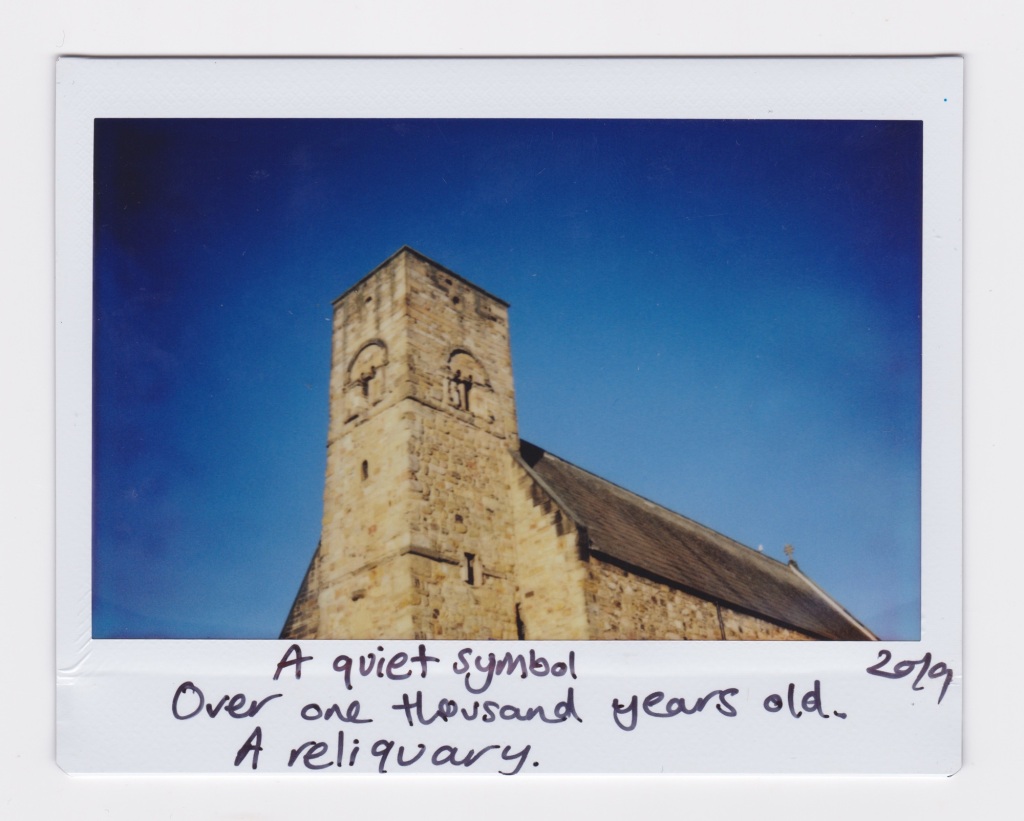By Anne Loadman
Professional children’s, and mental health writer, gives us a brief history of glass, and its legacy in Sunderland.
This is the story of how a wealthy nobleman, a lord in the court of a Northumbrian King, became a man of religion, innovation and patron of the arts, bringing glassmaking to Wearside.
I am talking of course about Biscop Baducing, who lived in the North East of England in the 7th century, and first started his career at the court of King Oswiu of Northumbria. Biscopwas such a brave and dedicated member of court that, on his decision to devote his life to religious study, he was gifted 70 hides of land, by Ecgfrith, who had succeeded Oswiu, on which the monastery of St Peter, Wearmouth was built, with its associated church. The church was consecrated in 675AD and Biscop, who now adopted the name, Benedict, became its first abbot, leaving his old life, and indeed his marriage, behind.
The church and monastery at Wearmouth were unusual for the time, built, as they were, of stone. Most buildings in the North East, at that time, were of wooden construction; but this was not enough for the well-travelled Biscop.

Being a physically fit, as well as devout man, Biscop made the pilgrimage to Rome, on foot, five times in his life. He also visited Gaul, now modern day France. It is said that he marvelled at the stained-glass windows in the European churches he saw on his travels and loved fine art. He must also have been quite persuasive, as, on each journey, he not only brought back books, icons and relics, but also stonemasons and glassmakers from the balmy Mediterranean climate, to the windswept coast of North East England.
It was during one such trip in 675 AD that Biscop crossed paths with a gifted French glassmaker, and persuaded him to come to Britain and pass on the rare knowledge of glassmaking. He brought back a shipment of key raw materials – quality beach sand, essential salts and mineral soda ash. Now glassmaking could start in earnest. This was not only for making beautiful items for the church; this was the start of a glassmaking legacy on the Wear, that would continue for more than 1300 years.
The glassmaker showed the monks how to use beach pebbles to raise the temperature high enough to fuel the newly-built furnaces. A ‘secret ingredient’, Gaulish dust, was used to diffuse the bright coloured glass. Soon, not only windows, but tableware, vases, flasks and tiles were being produced in Wearmouth, whilst training local monks in these skills.Previously, glass goods would have had to be transported to England carefully by ship – a very delicate process. Now glass could be made on the banks of the Wear – and in colour too! It must have been awe-inspiring for the small population who lived near the monastery, to see this innovation of stone and glass take shape.
By the time of Biscop’s death in 689 AD, glassmaking was firmly established on Wearside and the practice had spread to St Peter’s sister monastery at Jarrow. This small town, which eventually became the City of Sunderland, had started a revolution in glass. Over the following centuries, Sunderland became famed for its wares, from bottles to high class dinner services; with many factories setting up home here, during the industrial revolution, such as world-renowned glassmakers,Hartley-Woods, and, later, the famous Pyrex ware wasmanufactured here, by James Jobling, from the early 20thcentury.

It seemed natural, therefore, for Sunderland to house the National Glass Centre (NGC), which was opened by Prince, now King, Charles, in 1998, and is a popular, free to access, tourist attraction. Currently a home for independent glass artists, the NGC is both a working glassmaking centre, and the provider of a wider exhibition space. Visitors have the opportunity to see traditional glassblowing, or to take part in workshops to create their own glass objects, at a reasonable cost. These courses are always in high demand.
Sadly, the building, which is now owned by the University of Sunderland, is under threat of fairly imminent closure. If this venue disappears, the mighty fire of the furnaces, first ignited by Biscop, 1300 years ago, will be extinguished on Wearside, possibly forever. A campaign group has been set up with the intention of preserving this Centre and support is gathering momentum.
If you would like to read more about the NGC and how supporters are campaigning to save the venue, please sign the petition! And if you would like to get involved with the campaign email us at:
savethengc@gmail.com


Hi Jo, Love this inspirational article. Why don’t you try & engineer an invitation for King Charles to revisit the NGC, perhaps for the 30the Anniversary in 2028. If he accepted, would they dare close the NGC? An acceptance by King Charles would totally outmanoeuvre & create a very embarrassing situation!!!
Have Alan J. Poole, Cate Watkinson, Roger & Ann Tye, Sarah Blood, Joanne Mitchell, Zoe, Rena Halford or any other artists~lecturers, collectors etc expressed any interest in the campaign?
Regards
Tony PS: might “nick” some of this information for a talk I am doing on Glass later in the year.
Get Outlook for iOShttps://aka.ms/o0ukef ________________________________
LikeLike